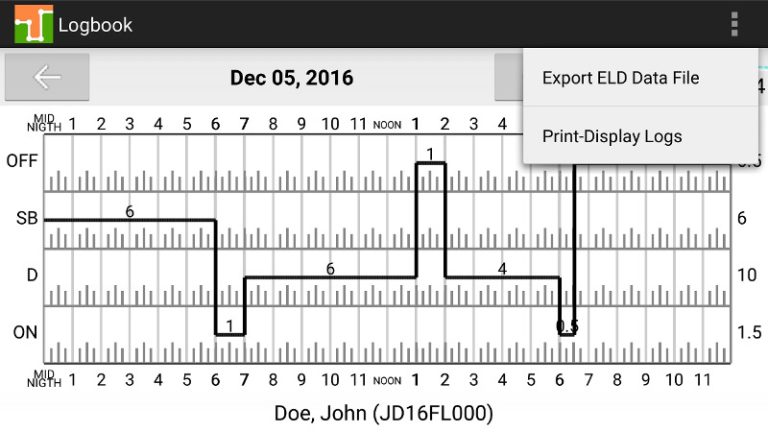Maximizing Fuel Efficiency in Fleet Management: A Comprehensive Guide for GPS Fleet Tracking Solutions
In today’s competitive transportation industry, fuel efficiency plays a critical role in reducing operational costs and minimizing environmental impact. For fleet managers, finding ways to optimize fuel consumption has become more important than ever. This article will explore the best practices for fuel efficiency across various types of vehicles, including heavy-duty trucks like Mack, Kenworth, and Freightliner. In addition, we will discuss how leveraging GPS fleet tracking solutions can lead to actionable insights and better fuel management for businesses.
Importance of Fuel Efficiency in Fleet Management
Fuel is one of the largest expenses in fleet management, making up as much as 30% of operational costs. Improving fuel efficiency can lead to substantial savings and contribute to a fleet’s sustainability efforts. Fleet managers are increasingly adopting GPS fleet tracking and fleet analytics solutions to monitor fuel consumption, detect inefficiencies, and improve overall fleet performance.
Optimizing fuel levels is a key aspect of improving fuel efficiency, and the range between 50% to 80% of fuel tank capacity is often the most effective for maintaining optimal fuel consumption.
Ideal Fuel Levels for Optimal Performance
Maintaining fuel levels in the ideal range can significantly impact a vehicle’s fuel efficiency. For most vehicles, including light-duty and heavy-duty trucks, keeping the fuel tank at 50% to 80% capacity is recommended. This range minimizes the extra weight that comes with a full tank while ensuring that the fuel pump doesn’t have to work harder when the tank is near empty.
Let’s break this down further by vehicle type:
Light-Duty Trucks (e.g., Ford F-Series, Chevy Silverado)
For light-duty trucks, maintaining fuel levels at 60% to 80% of the tank capacity is recommended. These trucks are commonly used for short hauls or deliveries within city limits. Optimizing fuel levels can help avoid unnecessary weight while ensuring that drivers are not stopping too often to refuel.
Heavy-Duty Trucks (e.g., Mack, Kenworth, Peterbilt)
For heavy-duty trucks, which are often used for long hauls, keeping fuel levels between 50% to 70% is generally the best practice. These trucks have much larger fuel tanks, and keeping them full can add significant weight, reducing fuel efficiency. However, running the tank too low can also strain the fuel pump, especially when driving long distances.
Fuel Efficiency in Mack Trucks
Mack Trucks are known for their durability and performance on long-haul routes. To get the most out of a Mack truck in terms of fuel efficiency, maintaining fuel levels between 50% and 70% of the tank capacity is essential. However, fuel efficiency in these trucks is influenced by more than just fuel levels. Let’s take a closer look at the additional factors that affect Mack truck fuel consumption.
Driving Habits
Fuel efficiency can vary greatly based on driving habits. Encouraging drivers to maintain a steady speed, avoid rapid acceleration, and reduce idling time can significantly improve fuel economy. GPS fleet tracking systems can provide real-time feedback to drivers, helping them adopt more fuel-efficient driving behaviors.
Load Management
Proper load management also plays a crucial role in fuel efficiency. Overloading or improperly distributing weight in a Mack truck can negatively impact fuel economy. Fleet managers should use GPS tracking systems to monitor vehicle load, ensuring that trucks are operating within optimal weight limits.
Tire Maintenance
Under-inflated tires can reduce fuel efficiency by up to 3%. Mack trucks benefit from regular tire pressure checks and using low rolling resistance tires designed to improve fuel economy.
How GPS Fleet Tracking Solutions Improve Fuel Efficiency
GPS fleet tracking systems offer fleet managers an effective way to monitor and manage fuel consumption. By integrating real-time data analytics, these solutions can provide actionable insights that lead to better fuel management and overall fleet performance. Below are the key ways GPS fleet tracking solutions can contribute to fuel efficiency:
Monitoring Fuel Levels in Real-Time
GPS fleet tracking systems enable fleet managers to monitor fuel levels in real time, making it easier to ensure that trucks are operating within the ideal fuel range. Alerts can be set up to notify drivers or managers when fuel levels drop too low, preventing inefficiencies related to fuel pump strain or unnecessary fuel stops.
Identifying Inefficient Driving Behaviors
Inefficient driving behaviors, such as harsh braking, rapid acceleration, and excessive idling, can greatly reduce fuel efficiency. GPS fleet tracking systems provide data on these behaviors and allow fleet managers to coach drivers on how to improve their fuel consumption.
Reducing Idle Time
Heavy-duty trucks often consume a significant amount of fuel during idle periods. GPS fleet tracking solutions can help identify when trucks are idling excessively and send alerts to drivers, encouraging them to turn off their engines when not in use. Reducing idle time can lead to immediate fuel savings, especially for long-haul vehicles like Mack and Kenworth trucks.
Route Optimization
Optimizing routes is another effective way to reduce fuel consumption. GPS fleet tracking systems can analyze historical traffic patterns, road conditions, and other variables to recommend the most fuel-efficient routes. Avoiding congested roads or rough terrains can lead to fewer fuel stops and reduced vehicle wear and tear.
Maintenance Alerts
Regular vehicle maintenance is critical to fuel efficiency. GPS fleet tracking solutions can send alerts when it’s time for routine maintenance, such as oil changes, tire rotations, or air filter replacements. Ensuring that vehicles are well-maintained can help avoid fuel-wasting mechanical issues.
Long-Haul Trucking and Fuel Efficiency
Long-haul trucking presents unique challenges when it comes to fuel efficiency. Maintaining optimal fuel levels, reducing idle time, and ensuring that trucks are properly loaded are key considerations for fleet managers in the trucking industry. For trucks like Mack, Kenworth, and Peterbilt, using GPS fleet tracking solutions provides real-time insights that help fleet managers make informed decisions about fuel management.
For example, long-haul trucks often benefit from aerodynamic modifications such as roof fairings and side skirts. These adjustments can reduce drag and improve fuel efficiency, especially at highway speeds. GPS tracking systems can help monitor the impact of these modifications on fuel consumption over time.
Future Trends in Fuel Efficiency for Fleet Management
With advancements in technology, the future of fuel efficiency in fleet management looks promising. Fleet managers are increasingly turning to data-driven solutions such as AI-powered fleet analytics and predictive maintenance tools to optimize fuel consumption.
Additionally, the growing adoption of electric and hybrid trucks in fleet management will further shift the focus toward reducing fuel consumption. As these vehicles become more common, GPS fleet tracking solutions will need to adapt to monitor battery levels, charge times, and energy consumption in real-time.
For fleets that still rely on diesel-powered trucks like Mack, Kenworth, and International, transitioning to alternative fuels or biofuels could also present new opportunities for improving fuel efficiency. As regulations around fuel emissions become stricter, adopting new technologies and fuels will be crucial for staying competitive in the fleet industry.
Conclusion
Fuel efficiency is a top priority for fleet managers looking to reduce costs and improve the environmental footprint of their operations. For light-duty and heavy-duty trucks alike, maintaining fuel levels within the 50% to 80% range is crucial for achieving optimal fuel consumption. Trucks like Mack, Kenworth, and Peterbilt present unique challenges when it comes to fuel efficiency, but GPS fleet tracking solutions offer the tools needed to overcome these challenges.
By monitoring fuel levels in real-time, reducing idle time, optimizing routes, and ensuring proper vehicle maintenance, fleet managers can maximize fuel efficiency across their fleets. As technology continues to evolve, data-driven solutions such as GPS fleet tracking will remain essential for improving fuel management and reducing operational costs.
With fuel being one of the largest expenses in fleet operations, every gallon saved counts. Using fleet analytics and real-time GPS tracking, fleet managers can take actionable steps to optimize fuel consumption, lower costs, and achieve better overall performance for their fleet.
By implementing the best practices discussed in this guide, fleet managers can make informed decisions about fuel management and ensure that their fleet is operating at maximum efficiency.






